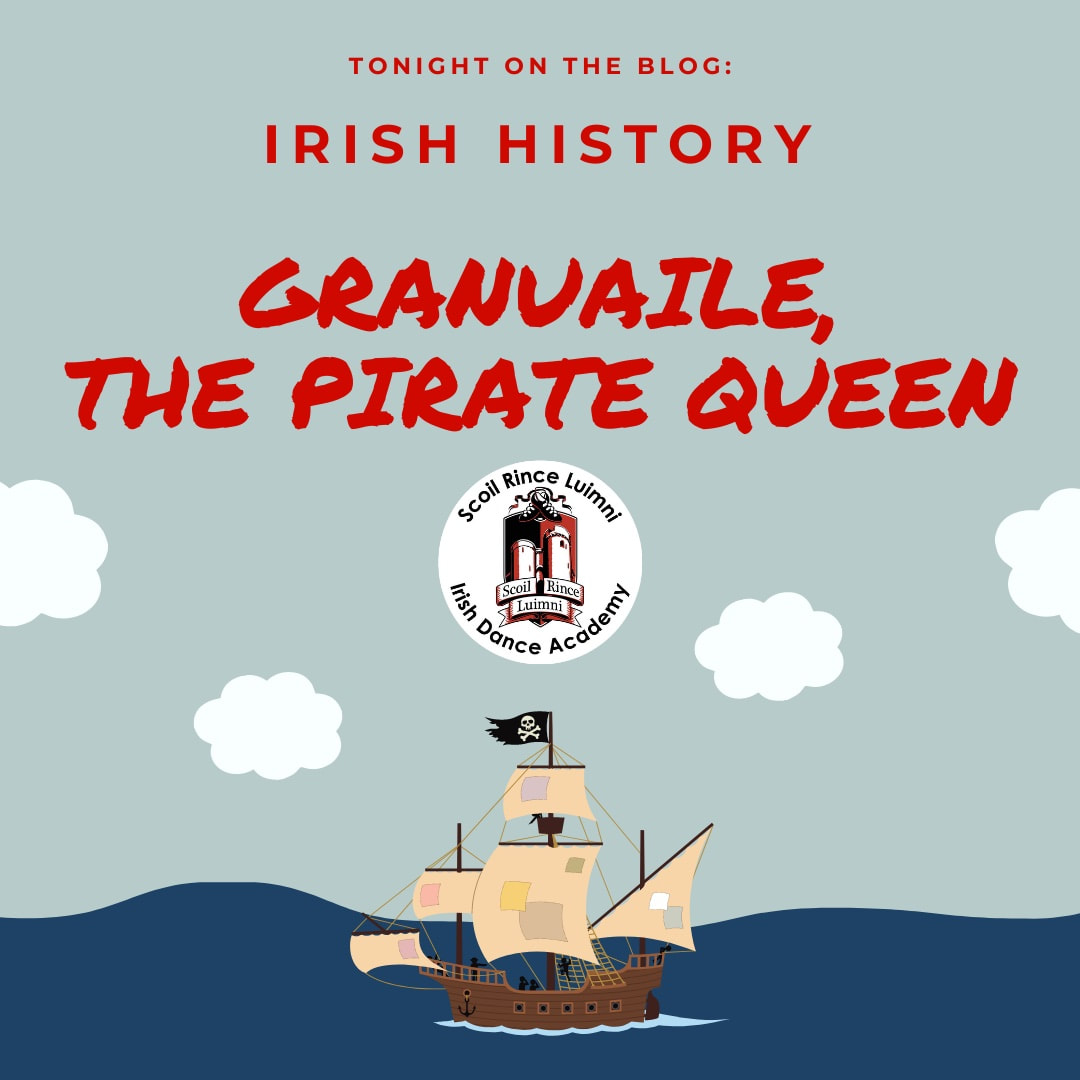|
Granuaile, The Pirate Queen Irish history has no lack of strong female role models. From Saint Brigid of Kildare to in the 5th century to women’s rights activist Teresa Deevy, who lived into the 1960s (not to mention all before, between, and after!), Irish women have been breaking through the societal confines of their gender as long as there’s been people on the island. At SRL, we’re all about girl power, so tonight we’re bringing you the story of a headstrong woman in a male-dominated “workplace”--Granuaile, Ireland’s Pirate Queen. Born Grace O’Malley in 1530 in County Mayo to the fierce, seafaring O’Malley clan, Granuaile grew up and was educated in Belclare Castle and on Clare Island. Her family rose to prominence in the 14th century, ruling the southern shore of Clew Bay and the majority of the Murrisk barony for over 300 years. From their early days, clan O’Malley took to piracy, boarding ships that were on their way to or from Galway while taxing all those who fished in their territory. They were a powerful and feared family all throughout Ireland, with their reputation making it all the way to British, French, and Spanish shores where their trading made them rich. Grace was willful and determined from a young age—legend tells that at only 11 years old she pleaded with her father to join him on the sea. He refused (saying her long, red hair would get tangled in the ship’s rigging) and set off, only to find Grace with all her hair shorn off next time he returned home. She had convinced him and from that day forth was known on all the ships she worked on and eventually commanded as “Gráinne ni Mhaille” aka “Bald Grace”—a name which morphed into the almost mythical title of Granuaile. At the age of 15, Granuaile married the son of equally influential O’Flaherty clan, Donal O’Flaherty, heir to yet another family known for their seafaring and piratical ways. The pair quickly had three children—Owen, Margaret, and Murrough— all while Granuaile continued to rise in her fleets’ esteem as a fearless leader. Donal died when Granuaile was only 23, making her head of both the O’Malley and O’Flaherty families (despite there being male heirs able to take over!) She would marry one more time—another political alliance with Richard Burke—who she famously “divorced” by calling to him through a window: “Richard Burke, I dismiss you” after one year of marriage. She kept control of much of his lands. Her life continued to prove to be legendary and boundary-breaking until her death in 1603 at Rockfleet Castle, one of her many properties (including the O’Malley Castle, Doona, and Kildavnet—her reach extending all throughout the Mayo region.) It’s said she slept with the mooring ropes of her ship strung through her bedroom window so she could board her own ship at a moment’s notice and had an elaborate colored smoke signal system to communicate between her strongholds. Her one son with Richard Burke, Toby Burke aka “Tiobóid na Long or "Toby of the Ships,” was born in 1567 and was so named because Granuaile notably gave birth at sea. Not only that, but within an hour of his birth the ship was attacked by Algerian pirates. Rather than continue to recover, Granuaile appeared on the deck, wrapped in a blanket, and lead her crew into battle. They won. Her most famous exploit, however, was her meeting with Elizabeth I. When the British captured brother and her two sons, Granuaile sailed up the Thames herself to petition the crown for their release. Granuaile and Elizabeth met at Greenwich Castle in September of 1593, a meeting during which Granuaile refused to bow as she was a Queen herself and recognized no other. The parlay was a success with the prisoners returned on the condition Granuaile and her fleets cease harrying British ships. Though Granuaile would eventually support the Irish insurgents who resisted British rule, she did end her piracy against the British and the two queens were said to have mutual respect for each other--they even died in the same year! As a pirate (and a woman who broke societal norms,) much of the Irish histories, which were typically written by monks, erased Granuaile from their annals. Today, most period accurate accounts we have of her life come from the British—but the Irish are attempting to rectify that. In 2021, the Mayo City Council, in conjunction with Ireland’s largest tourism board (Failte Ireland,) announced a plan to create a “Pirate Trail” honoring Granuaile and her place in Irish history. The plan is to post sign posts throughout the Mayo region, leading people through the history of the Grace O’Malley’s historic, intrepid lifetime. This comes on the heels of 100 years of Irish independence from the British, celebrating Granuaile as “one of the last Irish leaders to defend against English rule in Ireland.”
While a pirate may not technically be a role model for young women, someone like Grace O’Malley, who chases her dreams and breaks through the proverbial glass ceiling, certainly is. We might not condone the looting, plundering, and commandeering, we can condone someone who bucks society’s expectation of women. Strong, bold, and brave—just like our SRL dancers! This post is part of a series. Read our last Irish History post, all about Irish inventors, here. Check out the blog every Monday and Thursday for more posts about Irish history, dance culture, community news, and spotlights on our dancers, staff, and families—among other fun projects! And don’t forget to dance along with us on both Facebook and Instagram.
0 Comments
Your comment will be posted after it is approved.
Leave a Reply. |
SRL NewsFind all of our latest news on our Scoil Rince Luimni Facebook page! Categories
All
Archives
August 2022
|

 RSS Feed
RSS Feed